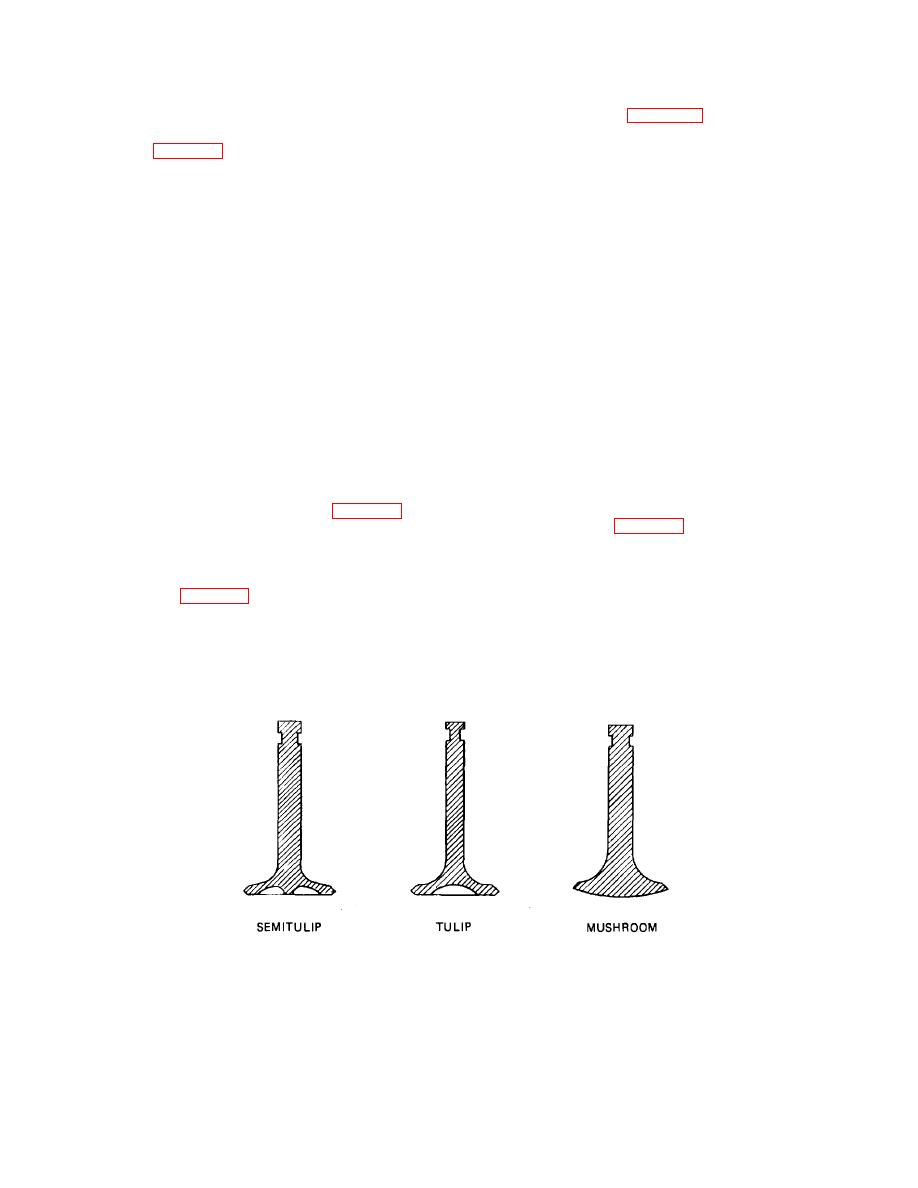
| Tweet |

Custom Search
|
|

|
||
 TM 9-8000
c. Valve Seats (Fig. 3-48). valve seats are very
Section III. 3-12. Valves and Seats.
important, as they must match the face of the valve
head to form a perfect seal. The seats are made so that
a. General (Fig. 3-46). Each cylinder in a four-stroke
they are concentric with the valve guides; that is, the
cycle engine must have one intake and one exhaust
surface of the seat is an equal distance from the center
valve. The valves that are commonly used are of the
of the guide all around. There are two common angles
poppet design. The word poppet is derived from the
that are used when machining the valve seat; they are
popping action of the valve. Poppet-type valves are made
30 and 45 degrees. The face of the valve is usually
in the following three basic shapes: the mushroom,
ground with a one-half to a 1-degree difference to help
semitulip, and tulip. The valve shape that is used in a
the parts seat quickly. In some cases, a small portion of
given engine is dependent upon the requirements and
the valve seat has an additional 15- degree angle
combustion chamber shape.
ground into it to narrow the contact area of the valve
face and seat. By reducing the contact area, the
b.
Construction.
Construction
and
design
pressure between the mating parts is increased,
considerations are very different between intake and
thereby forming a better seal. The valve seats can be
exhaust valves. The difference is based on their
either part of the cylinder head or separate inserts.
temperature operating ranges. Intake valves are kept
Valve seat inserts generally are held into the head by an
cool by the incoming Intake mixture. Exhaust valves are
interference fit.
subject to intense heat from the burnt gases that pass by
it. The temperature of the exhaust valve can be in excess
The head is heated in an oven to a uniform high
of 13000F (704.40C). Intake valves are made of a nickel
temperature and the seat insert is shrunk by cooling it in
dry ice. While the two parts are at opposite temperature
alloy. In certain heavy-duty water- cooled and most air-
extremes, the seat insert is pressed into place.
cooled engines, the exhaust valves are hollowed out and
filled partially with metallic sodium (B, fig. 3-47). The
d. Valve Guides (Fig. 3-49). The valve guides are the
sodium, which liquefies at operating temperatures,
parts that support the valves in the head. They are
splashes between the valve head, where it picks up heat,
machined to a fit of a few thousandths of an inch
and the valve stem, where the heat is transferred to the
clearance with the valve stem. This close clearance is
valve guide. Some exhaust valves use a special hard
important for the following reasons:
facing process (A, fig. 3-47) that keeps the face of the
valve from taking on the shape of the valve seat at high
(1) It keeps the lubricating oil from getting
temperatures.
Figure 3-46. Valve Configurations
3-27
|
||
 |
||